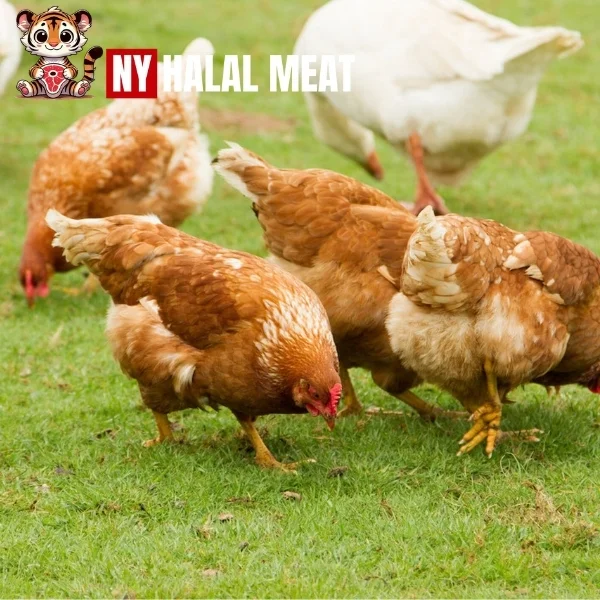
Understanding Antibiotic-Free Chicken Labels: What You Need to Know
What Does “Antibiotic-Free” Mean?
The term “antibiotic-free” refers to chicken that has been raised without the use of antibiotics. Antibiotics are often used in the poultry industry to prevent illness and promote faster growth. However, the widespread use of antibiotics in animal agriculture has raised concerns about antibiotic resistance, which can make antibiotics less effective for treating human infections.
When a chicken product is labeled as “antibiotic-free,” it means that no antibiotics were administered during the animal’s life. However, this does not necessarily mean that the bird was never exposed to antibiotics in any form. Some products labeled as antibiotic-free may still be allowed to contain trace amounts of antibiotics, depending on the regulations in place.
Regulations Behind “Antibiotic-Free” Labels
In the United States, the U.S. Department of Agriculture (USDA) plays a key role in regulating poultry products, including those labeled as “antibiotic-free.” However, there is no single, standardized definition for this label, and different brands may use it in different ways.
- “No Antibiotics Ever”: This label typically indicates that the chicken was raised without any antibiotics at any point in its life. This is the most strict and clear form of antibiotic-free labeling, but it’s important to ensure the product is verified by third-party certifications or the USDA.
- “Raised Without Antibiotics”: This label means the chicken was not treated with antibiotics during its life, but the use of antibiotics for other purposes (like preventing disease in crowded conditions) may still be allowed. The bird might have been exposed to antibiotics before the final sale, as long as no residues remain by the time the chicken reaches consumers.
- “Antibiotic-Free”: While this sounds straightforward, the term can vary depending on the company and the specific certification. It generally implies that no antibiotics were used during the chicken’s raising, but it’s essential to confirm the standards set by the producer.
Why Does Antibiotic-Free Chicken Matter?
The use of antibiotics in agriculture has been controversial, with concerns about human health, animal welfare, and environmental impacts. Let’s explore why antibiotic-free chicken has become a significant focus for many consumers.
Healthier Meat for Consumers
One of the primary reasons consumers seek antibiotic-free chicken is health-related. When antibiotics are overused in animal farming, they can lead to antibiotic-resistant bacteria. These resistant strains can then transfer to humans through consumption, increasing the risk of infections that are harder to treat with antibiotics. By choosing antibiotic-free chicken, consumers help reduce the risk of exposure to these resistant bacteria.
Reducing Antibiotic Resistance
Antibiotic resistance is a growing public health issue. According to the World Health Organization (WHO), antibiotic resistance could lead to a future where many infections are untreatable. Reducing the use of antibiotics in animal farming helps slow the development of resistance, promoting the continued effectiveness of antibiotics for treating human diseases.
Better Animal Welfare
Antibiotic-free chicken often comes from farms that focus on better living conditions for the animals. Without the routine use of antibiotics to prevent disease in crowded conditions, these farms typically maintain higher standards of hygiene and animal care. This can result in healthier, less stressed animals and improved overall welfare.
Environmental Benefits
Antibiotics used in farming can also have negative environmental impacts. The overuse of antibiotics in animal agriculture can result in contamination of soil and water sources. When antibiotics are overused, they can enter the environment through runoff or animal waste, leading to the spread of resistant bacteria in natural ecosystems. By choosing antibiotic-free chicken, you support farming practices that are more sustainable and environmentally friendly.
How to Identify Truly Antibiotic-Free Chicken
Not all products labeled as “antibiotic-free” are created equal. To ensure you’re choosing genuinely antibiotic-free chicken, look for the following certifications and labels:
- USDA Organic Certification: Organic chicken is required by law to be raised without the use of antibiotics. If you see the USDA Organic seal on the packaging, you can trust that the chicken was raised without antibiotics or synthetic growth hormones.
- Third-Party Certifications: Some third-party organizations, such as the “Global Animal Partnership” or “Certified Humane,” offer certifications for antibiotic-free practices. These labels may carry additional guarantees regarding animal welfare and farming practices.
- “No Antibiotics Ever” Label: This is one of the most reliable labels, ensuring that no antibiotics were used in the raising of the chicken, ever. Look for this specific phrase for the most transparency.
- Read the Fine Print: Always check the fine print for additional information. Terms like “raised without antibiotics” or “no antibiotics used” can still leave room for some ambiguity. Ensure that the product meets specific standards by looking for verification from trusted bodies.
Benefits of Choosing Antibiotic-Free Chicken

Opting for antibiotic-free chicken comes with a host of benefits, not just for your health but also for the broader environment and farming community. By choosing antibiotic-free chicken, you:
- Help reduce the risk of antibiotic resistance
- Support animal welfare and better living conditions for poultry
- Encourage sustainable and environmentally friendly farming practices
- Enjoy healthier, cleaner meat options for your family
Conclusion: Is Antibiotic-Free Chicken Right for You?
Choosing antibiotic-free chicken is a step toward a healthier and more sustainable lifestyle. By making informed decisions about the food you buy, you’re not only benefiting your health but also supporting responsible farming practices that prioritize animal welfare and environmental sustainability. While labels like “antibiotic-free” can be confusing, understanding the regulations behind them will help you make the best choice for your health, the planet, and the food system as a whole.
Next time you’re in the store, take a moment to check for antibiotic-free labels and certifications. Your choice can have a significant impact on your health, the welfare of the animals, and the future of our food systems.





